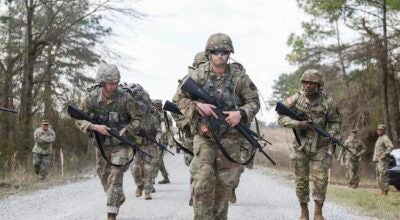St. John Parish Sheriff’s Office learns tough lessons
Published 12:00 am Monday, November 27, 2006
Special training designed to help first responders prepare and react to hostage and shooter situations
BY KERI CHAMPION
Staff Reporter
RESERVE- St. John Parish police officers recently took some lessons on how to provide more accurate and quicker responses to crisis situations. In a training program designed to teach law enforcement officers what to do in hostage and shooter situations, officers were schooled in close quarter battle, force-on-force techniques, search and rescue and Improvised Explosive Devices (IEDs).
St. John the Baptist Parish Sheriff Wayne Jones said that the training is designed to help first responders prepare and react to situations like Columbine in 1999.
“When Columbine happened, many of us watched in horror as the police had to wait for the S.W.A.T. team to arrive before they could enter the building. This program was developed to train first responders such as local law enforcement agencies on what to do while waiting on S.W.A.T. to arrive,” Jones said.
The original study done by Texas University at San Marcos revealed that local officers and first responders did not have the necessary skills and training to provide an effective response to these emergencies and so a program was developed to give first responders the ability and know-how to deal with crimes of this nature. The program they designed is called ALERRT (Advanced Law Enforcement Rapid Response Training)
“These kinds of things made me stop and think on how many lives could be saved if patrols had proper training on how to enter a building with an active shooter and hostages. The most critical time is usually between when the area is secured and the response time of law enforcement teams, and this program gives us a chance to learn what to do at that time,” he said. Jones said that the St. John Sheriff’s Office is the first in the state to receive training from this particular group.
David Burns, director of training for ALERRT said, “Many local agencies like police departments and fire departments are the first on the scene and these courses provide a foundation of learned skills that can be expanded upon and used in an emergency.”
However, the courses are just a starting point and Burns suggests that first responders continue to learn more techniques.
“Local agencies don’t have the luxury of daily training with a team like S.W.A.T. does, so the ALERRT program is a way that patrols can get training on entry, threshold evaluation search and rescue, firearms handling and close quarter combat,” he said.
It’s all a game of angles when entering a non-secure room. You have to be able to cover all angles so that people can be taken to safety. It’s like a chess game,” Burns said.
Burns is also a full-time police officer for Hayes County Sheriff’s Office in Texas and is an 8 ? -year veteran of the U.S. Army where he also learned these types of techniques.
“We as law enforcement officers have volunteered to place ourselves in harm’s way to protect the public. Knowing you could go in there where people are dying and not come out yourself is a very stressful thing, but these exercises will help us learn our strengths and weaknesses so we can better react and protect the people” he said.
The Texas Bureau Justice Association provides the grant for the training, and the program has been in place for five years. The program has been put in place in many other states including Georgia, Colorado and Washington.
“The one thing we want to stress is, the most important thing is to get in there and stop the killing,” said Jeff Waters, an adjunct instructor for ALERT. He was one of four instructors who were a part of the program.
“When in a building it is critical that officers think outside the box to find solutions to get the injured out safely, after all there is no one answer for every situation and we hope the training will help officers accomplish that and find creative solutions,” Waters said.




